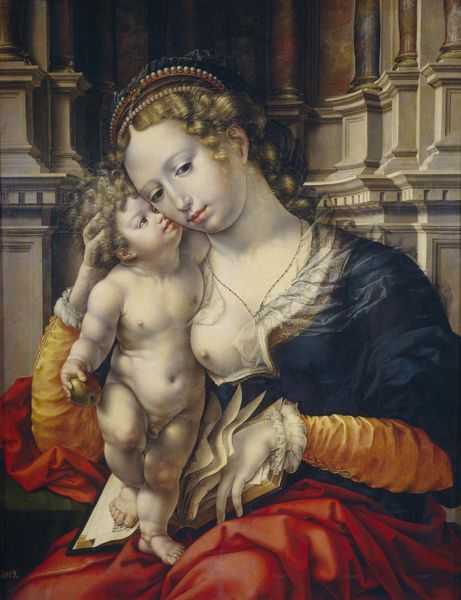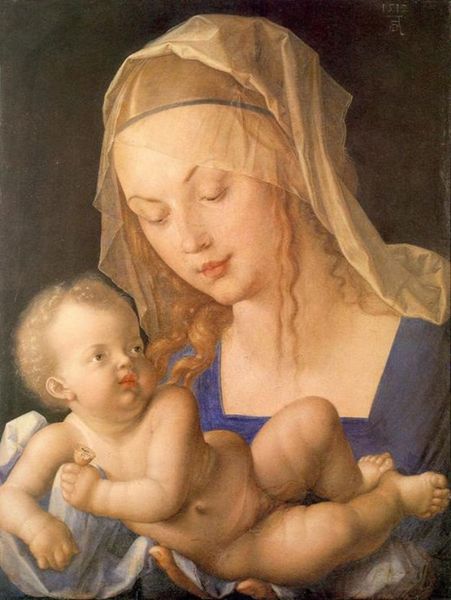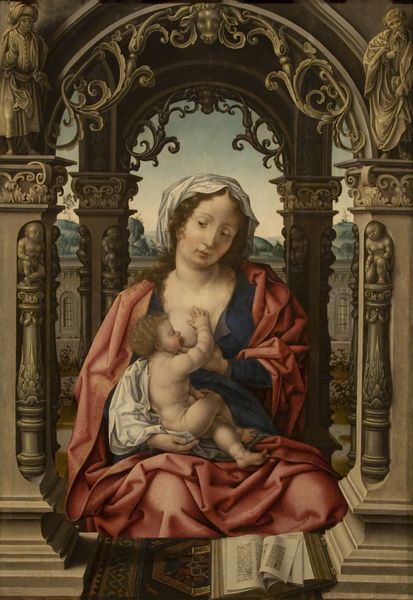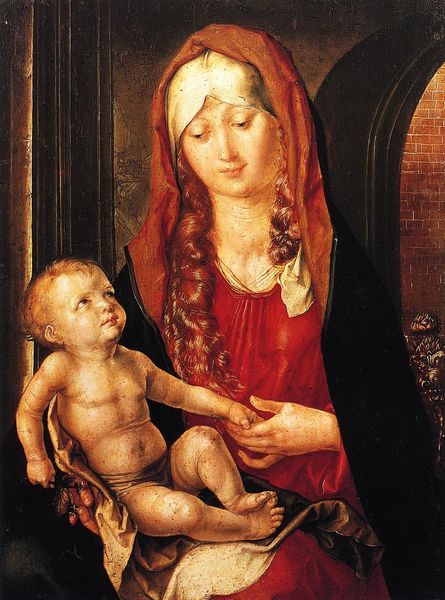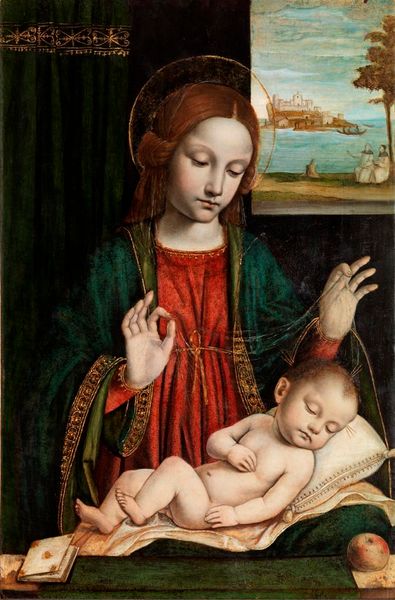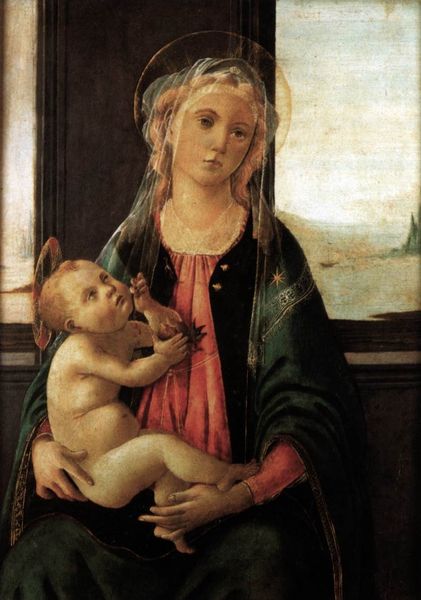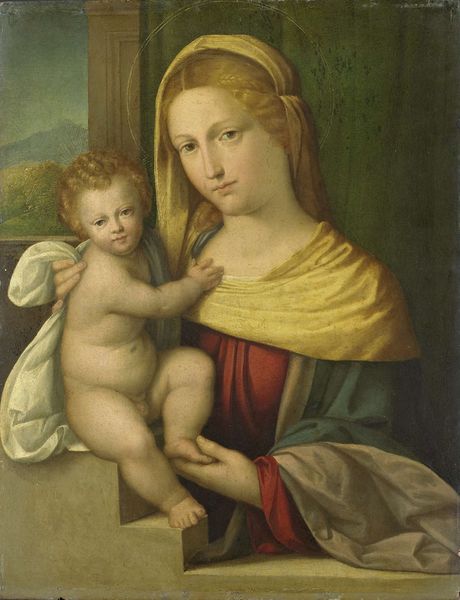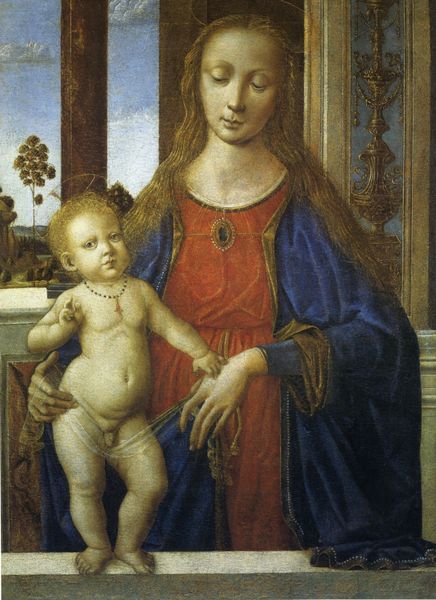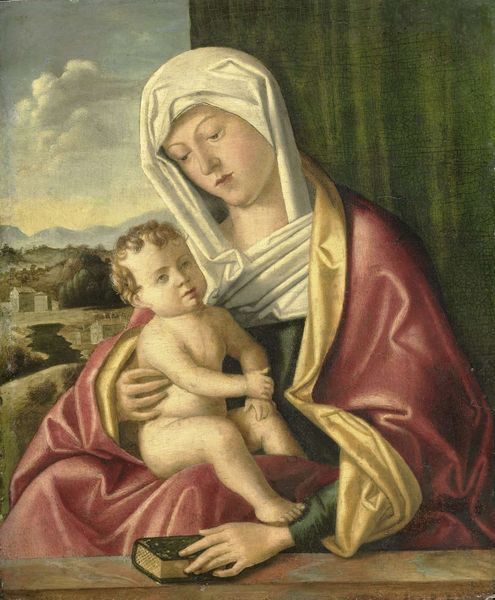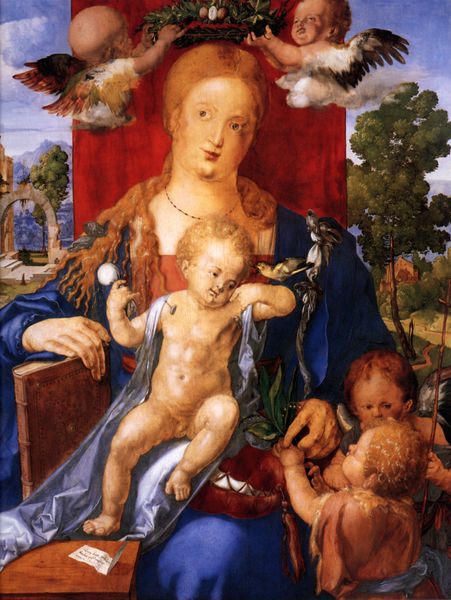
painting, oil-paint
#
portrait
#
high-renaissance
#
narrative-art
#
painting
#
oil-paint
#
figuration
#
oil painting
#
history-painting
#
italian-renaissance
Copyright: Public domain
Editor: This is Mabuse’s “Madonna and Child,” created around 1515 with oil paint. The texture looks incredibly smooth, almost porcelain. How should we interpret its appeal and value as an artifact? Curator: Look closely at the materials: oil paint, yes, but consider where Mabuse sourced those pigments. Ultramarine blue, likely from lapis lazuli, signifies not only luxury but global trade networks. The very act of painting was a commercial endeavor, linking artistic skill to the market. Editor: So, it's not just about the religious subject, but also about the value of the raw materials and the act of procuring them? Curator: Precisely! The smoothness you noted, the blended colours—that demands skill, time, expensive pigments, and therefore, commands a higher price and implies extensive studio practice and division of labour. Think about the social and economic context required to produce such a work. Editor: It’s easy to get lost in the idealized figures and miss the production side of things. Does that also affect the understanding of the “Madonna” as subject matter? Curator: Absolutely. The “Madonna” is not just an image; it’s a commodity representing power and patronage. By studying the materiality, we understand the relationship between the artist, the patron, and the viewing audience, highlighting economic dependencies. Editor: It shifts our perspective from solely admiring beauty to understanding art as the product of specific circumstances. Curator: Indeed! Recognizing artistic creation as material production challenges conventional notions. By foregrounding the process and its ingredients, this unlocks richer stories than stylistic choices can allow on their own.
Comments
No comments
Be the first to comment and join the conversation on the ultimate creative platform.
